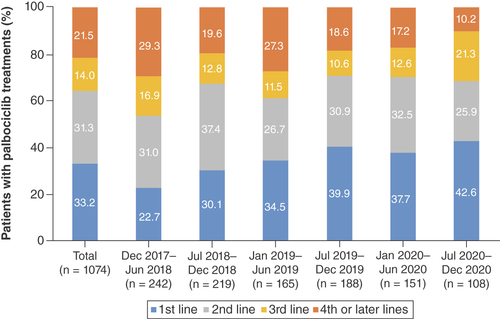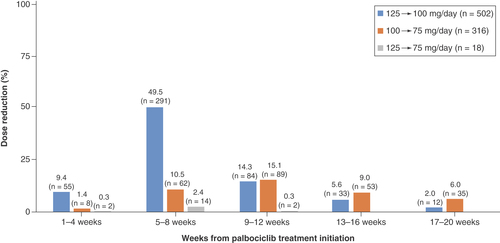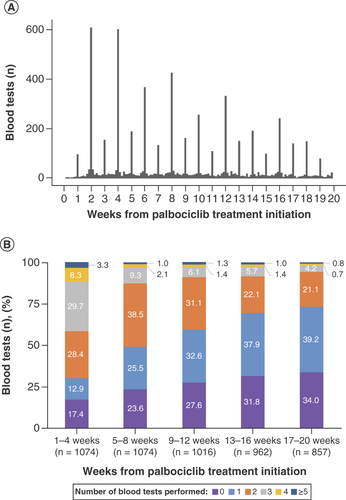Figures & data
Table 1. Definition of the first-line treatment for each patient with advanced breast cancer.
Table 2. Baseline demographic and clinical characteristics of patients initiating palbociclib treatments.
There was one patient who was prescribed palbociclib before December 2017 and was included in the total figure only.

This figure shows the results of the number of patients who were prescribed endocrine therapies in combination with palbociclib in the first three treatment lines (n = 843 out of 1074 patients). The results in the fourth or later treatment lines are not shown. The ‘other’ include patients prescribed ≥1 endocrine therapies and those prescribed medroxyprogesterone.

This figure shows the results of 6-month palbociclib treatment continuation in the first three treatment lines (n = 843 out of 1074 patients). Results in the fourth or later treatment lines are not shown.



